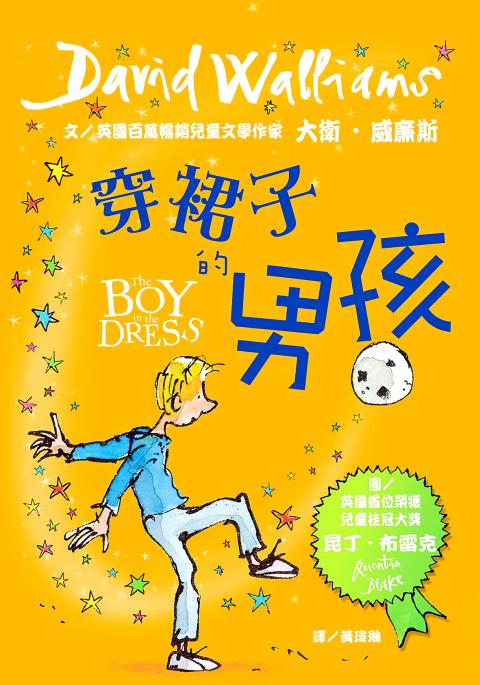Long An Elementary School in Taipei’s Daan District made a U-turn last Friday by lifting the ban on the children’s book The Boy in the Dress after causing a controversy by banning it. The school said it will allow students to borrow the book from its library again, and that it will encourage teachers to introduce the book to students as part of gender equality education.
The children’s book is written by David Walliams and illustrated by Quentin Blake. The controversy arose not long ago when the book was banned from its library after the school received a complaint from a parent, who demanded that the library remove the publication to avoid teaching boys to dress like girls. However, the book ban was strongly criticized by other parents as well as by academics and experts.
The Boy in the Dress tells the story of a 12-year-old boy who is expelled from his soccer team for cross-dressing, and it is often used to give students an understanding of value diversity. It has also been named an “excellent children’s book” by the Taipei City Government’s Department of Education.

Photo: CNA
照片︰中央社
(Eddy Chang, Taipei Times)
位於台北市大安區的龍安國小,因為禁止借閱童書《穿裙子的男孩》引發爭議後,上週五政策大逆轉取消禁書令。校方將會准許學生自圖書館借閱該書,也會鼓勵老師把書介紹給學生,以作為性別平等教育的一部分。
這本童書是由大衛威廉斯撰寫、昆丁布雷克繪圖。爭議起源於該校不久前接到一位家長的投訴後便下達禁書令,該名家長要求圖書館下架該書,以免教導男生穿著打扮像女生,但這項禁書令遭到其他家長和學者專家們的強烈批評。
《穿裙子的男孩》講述一位十二歲的男孩,因為穿著異性的服裝而被足球隊開除的故事,並經常被用來讓學生了解多元化價值,該書還被台北市教育局選為優良兒童讀物。
(台北時報張聖恩)

The UN Ocean Conference wrapped up in Nice, France on Friday last week with world leaders taking major steps toward marine protection and vowing a showdown when nations meet to negotiate rules for deep-sea mining next month. But a lack of funding pledges and the total omission of fossil fuels disappointed some observers. The summit was just the third — and largest yet — dedicated entirely to what the United Nations calls an “emergency” in the world’s oceans. The High Seas Treaty, or Global Ocean Treaty, is also known as the Agreement under the United Nations Convention on the Law

Some 400 kilometers above the Earth’s surface, the “International Space Station” (ISS) operates as both a home and office for astronauts living and working in space. Astronauts typically stay aboard the station for up to six months and engage in groundbreaking research projects in various fields, such as biology, physics and astronomy. These projects help scientists understand life in space and contribute to advancements that benefit people on Earth. The ISS has experienced significant growth since construction began in 1998. The station’s design and assembly represent an extraordinary international collaboration among Canada, the European Union, Japan, Russia and the United States.

William I of Prussia, a passionate painter, often autographed his works with “tormentis pinxit” — “painted in pain” — as a nod to his struggles with gout. Other historical figures like King Henry VIII of England and Benjamin Franklin also suffered from this “disease of kings,” which was common among people indulging in luxurious diets. Gout is primarily caused by high levels of uric acid in the body. Uric acid forms as the body breaks down purines, which are found in foods like red meat and seafood. Normally, the kidneys filter out uric acid. However, if the body produces

Continued from yesterday(延續自昨日) https://www.taipeitimes.com/News/lang Living on the ISS is challenging due to the absence of gravity. Astronauts must strap themselves into sleeping bags to prevent floating away while they sleep. They also spend about two hours exercising daily using specialized equipment. Despite this, microgravity can cause muscle loss, bone density reduction and cardiovascular changes. As a result, astronauts require extensive rehabilitation upon their return to Earth. In spite of these difficulties, astronauts often describe their experience on the ISS as life-changing. One of the most awe-inspiring aspects of living aboard the space station is the unparalleled view of Earth. Traveling at